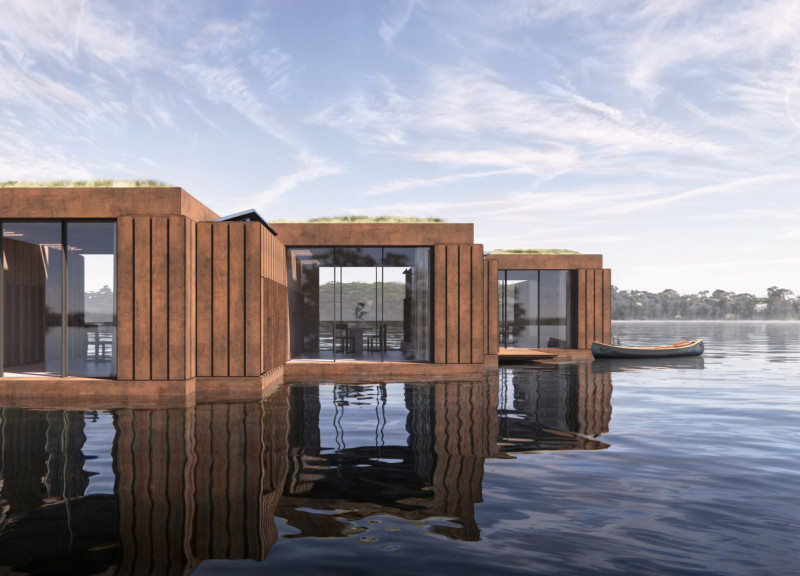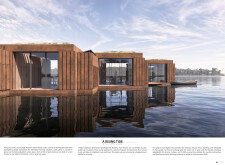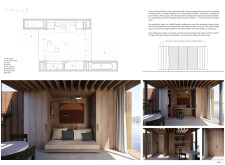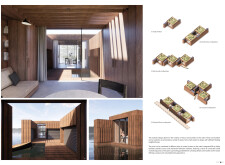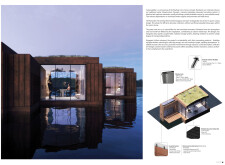5 key facts about this project
# Analytical Report on Floating Micro-Home Architectural Design
## Project Overview
The floating micro-home concept addresses the challenges of rising sea levels, urban flooding, and land scarcity by utilizing aquatic environments such as rivers and sheltered bays. This approach encourages sustainable housing development by deviating from traditional land-based residential design. The architecture emphasizes sustainability, modularity, and adaptability, aiming to provide a practical response to environmental shifts while fostering community living.
### Sustainable Living Practices
The design features several elements aimed at promoting environmentally responsible living. A rainwater harvesting system includes a slimline tank that captures rainfall for non-potable uses, thereby reducing reliance on municipal water supplies. Green roof systems not only enhance aesthetic appeal but also contribute to rainwater collection and promote biodiversity within the urban ecosystem.
### Modular and Adaptive Design
The micro-homes consist of configurable units that enable various layouts, such as single arrangements or side-by-side configurations, supporting flexible community formation. Each unit encompasses 25 square meters of living space, optimally arranged to maximize functionality while maintaining ecological balance. The interior design includes movable components that can transform the space for dual purposes, transitioning seamlessly from work to leisure. Additionally, large openings and sliding glass doors increase natural light and airflow, fostering an expansive atmosphere.
## Materiality and Construction Details
Materials selected for this project reflect both a commitment to sustainability and functional durability. A factory-engineered wall system facilitates rapid installation while ensuring long-term resilience. The rainscreen facade system not only offers environmental resistance but also provides a modern aesthetic. Key features include a robust ZINCALUME® steel slimline tank for rainwater collection, Tredak acoustic ceiling tiles for enhanced indoor sound quality, and Solatube tubular skylights to optimize natural lighting. Wood finishes used for both interior and exterior surfaces create warmth and a connection to nature, reinforcing the overall design narrative.
## Unique Living Environment
The design emphasizes water-centric living, allowing residents to engage directly with their surroundings, thereby addressing common barriers associated with waterfront habitation. The layout promotes the formation of micro-communities, enhancing social connectivity among residents while strategically maintaining privacy. The integration of renewable energy sources further exemplifies a commitment to environmental sustainability in contemporary architectural practice.


